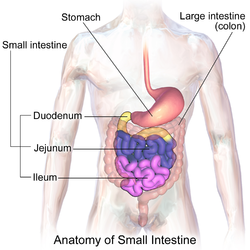
Jejunitis is inflammation of the lining of the middle section of the small intestine. [1] It is characterized by severe abdominal pain, vomiting containing bile, and foul smelling loose stools. [2] Acute jejunitis comes on suddenly and usually only lasts a few days. Less commonly, a chronic condition may cause persistent jejunitis. [3]